- Share
- Like
- Tweet
- Digg
- Tumblr
- VKontakte
- Love This
- Odnoklassniki
- Meneame
- Blogger
- Amazon
- Yahoo Mail
- Gmail
- AOL
- Newsvine
- HackerNews
- Evernote
- MySpace
- Mail.ru
- Viadeo
- Line
- Comments
- SMS
- Viber
- Telegram
- Subscribe
- Skype
- Facebook Messenger
- Kakao
- LiveJournal
- Yammer
- Edgar
- Fintel
- Instapaper
- Copy Link
Peter Cook and Gavin Robotham of London’s CRAB Studio won in 2011 the competition for the new Abedian School of Architecture, part of Bond University. Completed in 2014, the new school is located on the Gold Coast Campus designed in the 1980s by the renowned Japanese architect Arata Izosaki. The highly awarded building, was recently shortlisted for the 2014 World Architecture Festival Higher Education and Research Award, and won the Inside Festival Education & Health Award.
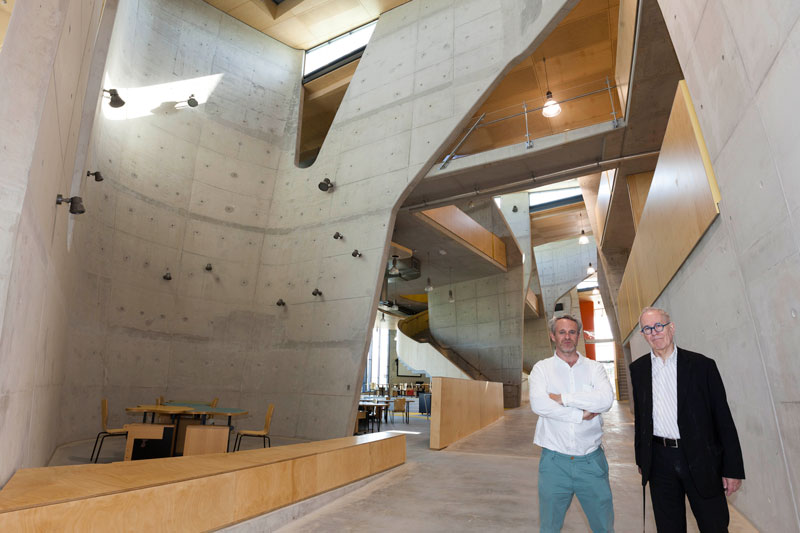
Image © Rix Ryan
The university was designed as a long airy loft on three levels, featuring a corridor that rises gradually along the length of the building, echoing the topography of the site. Casual meeting rooms, offices, studios, and labs, are all arranged on either side of the corridor as a series of ‘scoops’.
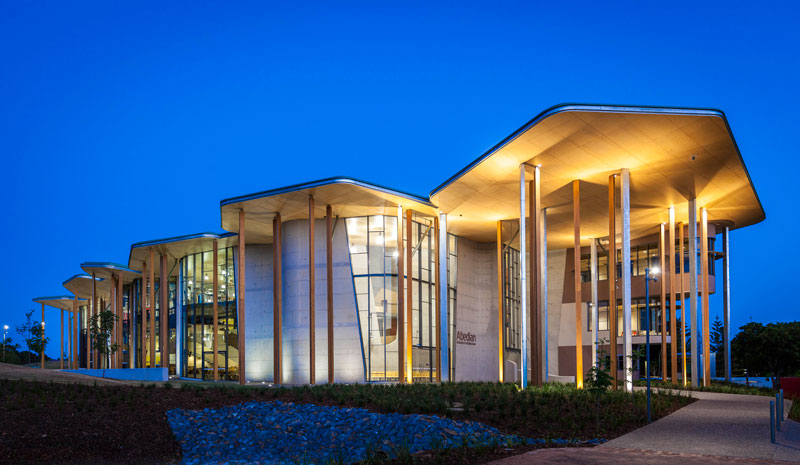
Image © Rix Ryan
Peter Cook’s and Gavin Robotham’s long experience as teachers of architecture and their regular working knowledge of several including the Bartlett, AA, Harvard, SCI-ARC, Columbia, Frankfurt and UCLA enabled them to incorporate a response to many anecdotal criteria as well as constructional and climatic objectives.
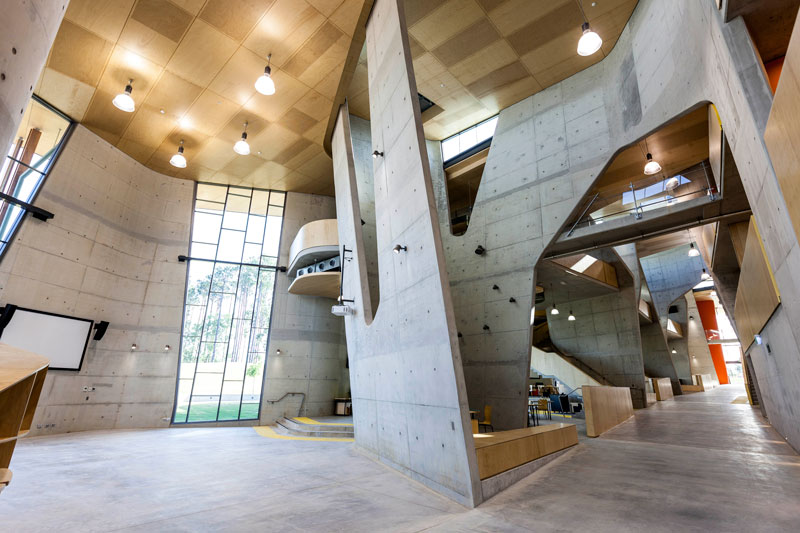
Image © Rix Ryan
It is our experience that philosophical intentions and curricula have a habit of ebbing and flowing over time but should always be based around observable habits and needs. Changes occur in response to world issues and new global challenges but sometimes the generators of change are more local – a change of personnel, for example. Hopefully they are the result of thoughtful extensions to the discipline of architecture – the entrenchment of a new way of teaching which reflects life outside.
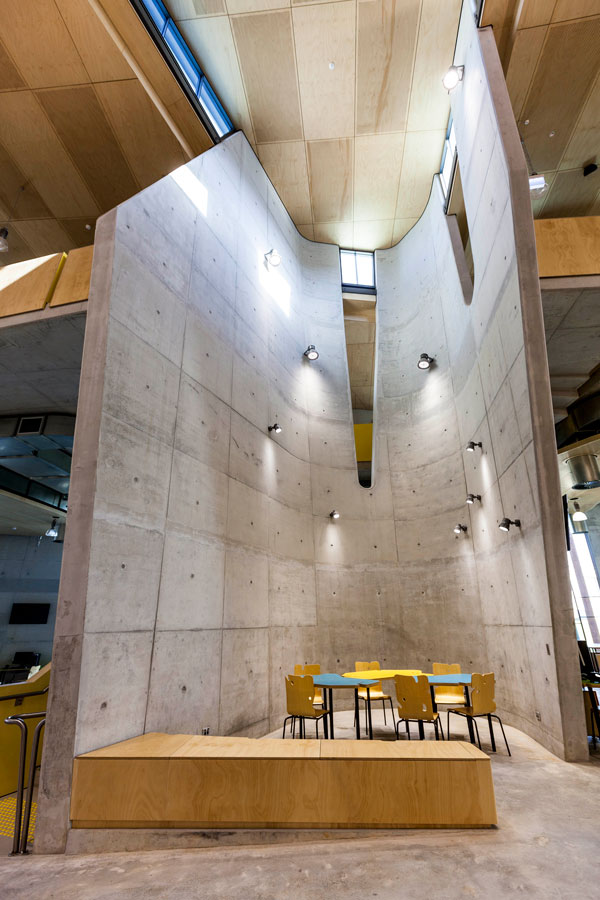
Image © Rix Ryan
The building was designed to follow a clear system, diversified with deliberate idiosyncrasies, that can resonate with its users. The result is a building that creates an episodic journey. The dynamic ‘scoops’ add a sense of drama and intrigue, while bright and colourful furniture add a sense of vitality to the experience.
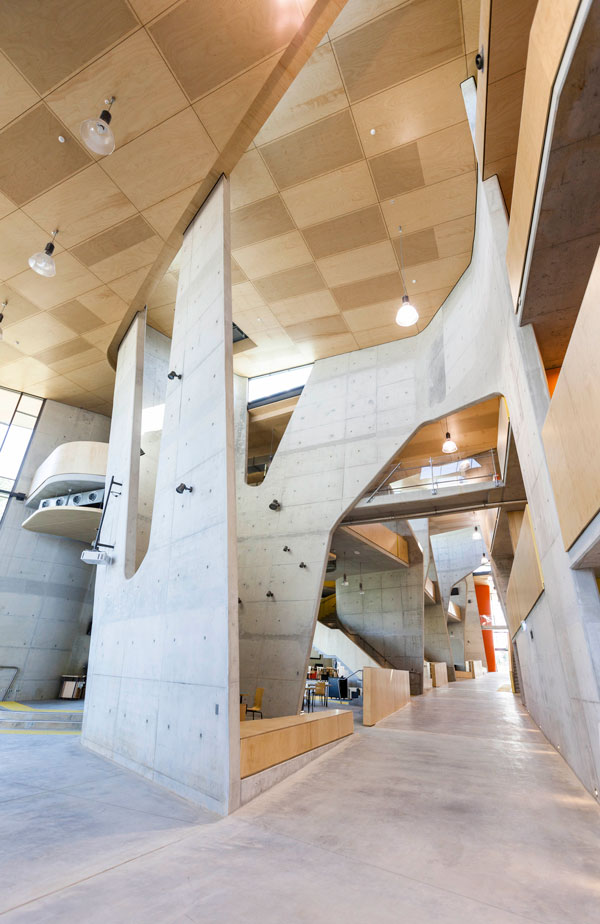
Image © Rix Ryan
We created a very ambient building, where the individual can really identify with the nature of his or her activity – thus the studio pads, scoops, decks and corners – though based on a clear hierarchy and system – have significant shifts of direction or variations of size. These elements particularise – we hope, in a subtle and enjoyable way.
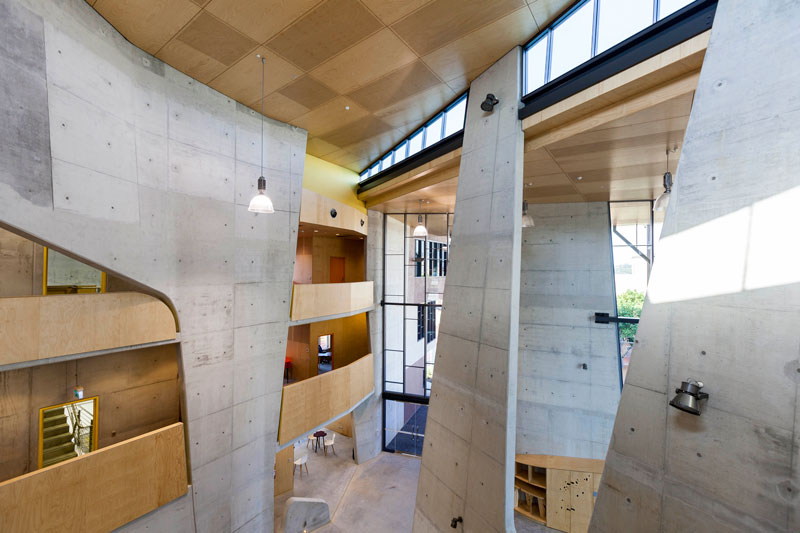
Image © Rix Ryan
The building seems to transform itself as you experience it. The north side of the building is ‘sheltered and determined’, housing quiet meeting spaces, while the south seems ‘effortless and free’, with airy studio spaces. From this ‘street’ the faculty’s studios and large gathering spaces spread out onto a terraced deck – which itself melts into a re-vegetated hillside garden. These ‘tectonic rafts’ together with the central ‘spine’, quieter study areas and dramatic ‘scoops’ define the building’s rocky core.
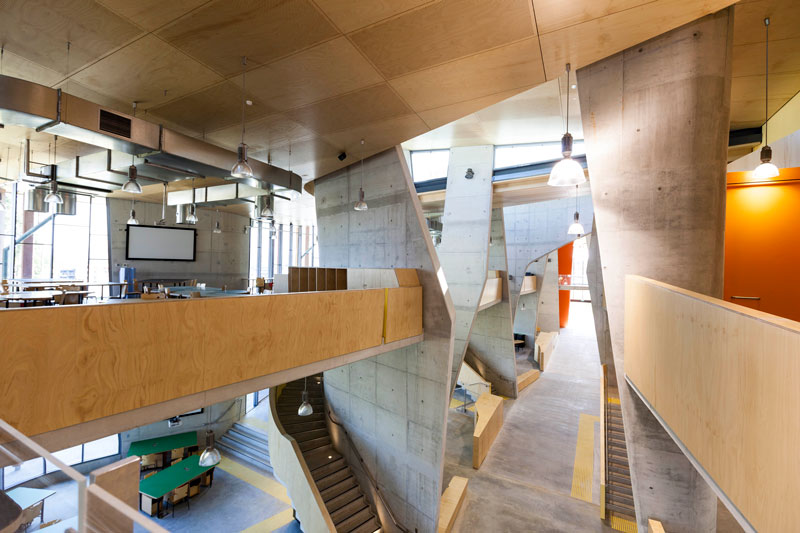
Image © Rix Ryan
We wished to manipulate the surface of the building – sheltering it from direct northern light and filtering the southern light into the interior. Avoiding glare and overheating – without homogenising one’s experience the interior. We created instead, an idiosyncratic series of ‘lit places’ and darker, more elemental pockets.
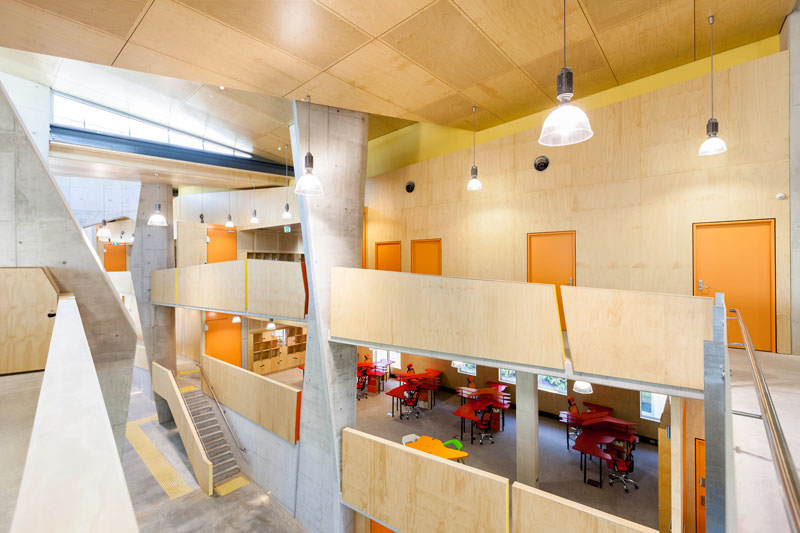
Image © Rix Ryan
Due to its location, and hot summer weather, CRAB Studio has designed the building to incorporate a series of fan-like roofs and slits that create a very climate-controlled environment. The orientation of the building, along with the integration of the sunhoods and column system of the facades, succeed in mitigating the majority of the Sun’s potentially excessive effects.

Image © Rix Ryan
We have also taken account of the prevailing winds during the development stage of our scheme. The building encircles the crown of the hill, turning its harder ‘back’ to the colder south winds. Winds, whereas the north façade shelters a variety of window configurations that are screened from the sun by a series of metallic ‘eyebrows’ that effectively create an art piece as well as a shielding system.
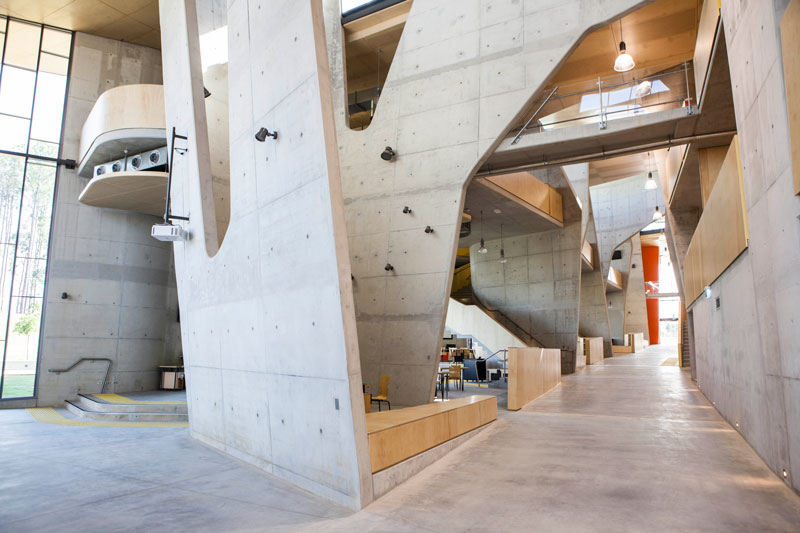
Image © Rix Ryan
‘Internally, the main circulation areas along the internal ‘street’ act as a thermal buffer and encourage the natural movement of air along the length of the building’, adds CRAB.
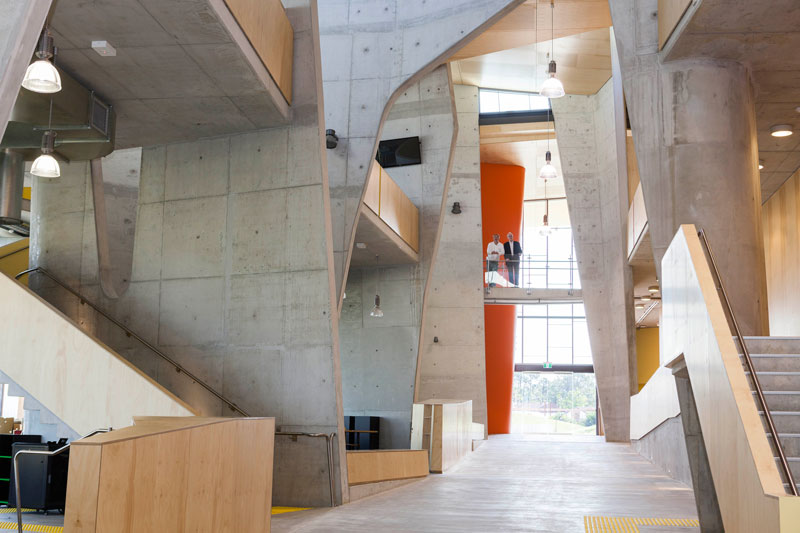
Image © Rix Ryan
The building’s construction also provides a higher degree of inertia against external temperature fluctuations than similar contemporary technologies. The thermal mass of the concrete ‘scoops’ absorb heat when the surroundings are hotter than the mass, returning that warmth to the environment during the evening and at night when the surroundings are generally cooler.
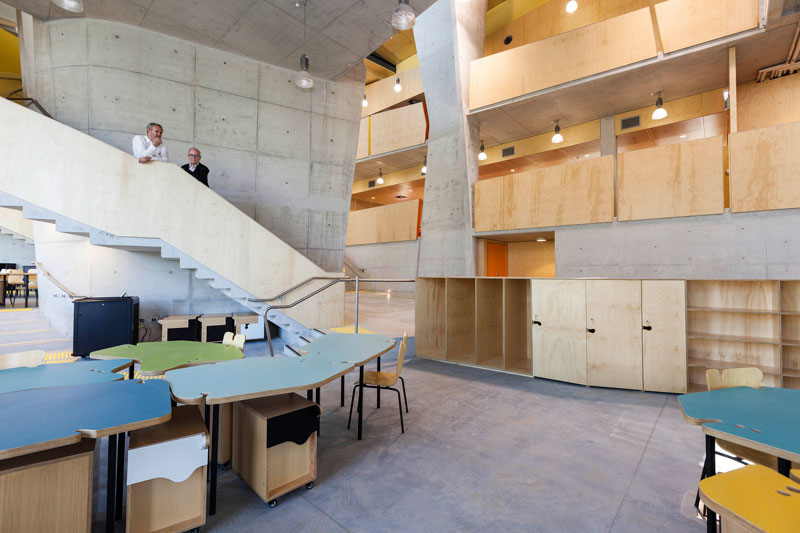
Image © Rix Ryan
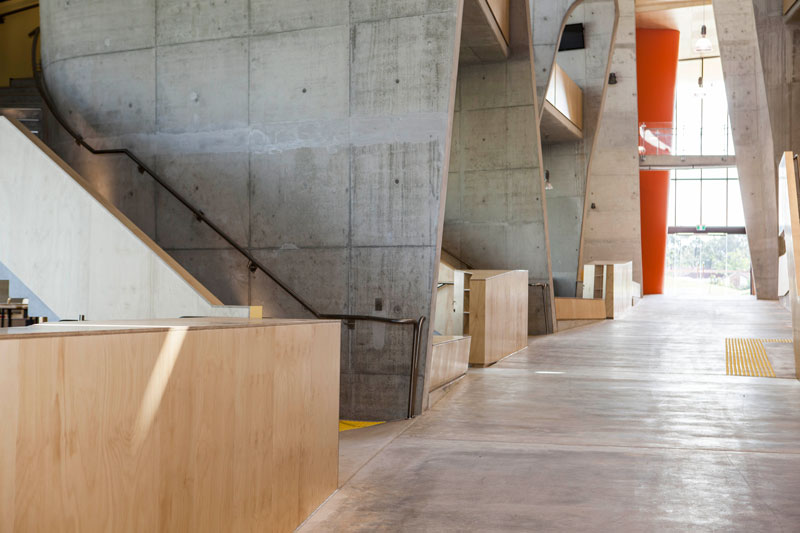
Image © Rix Ryan
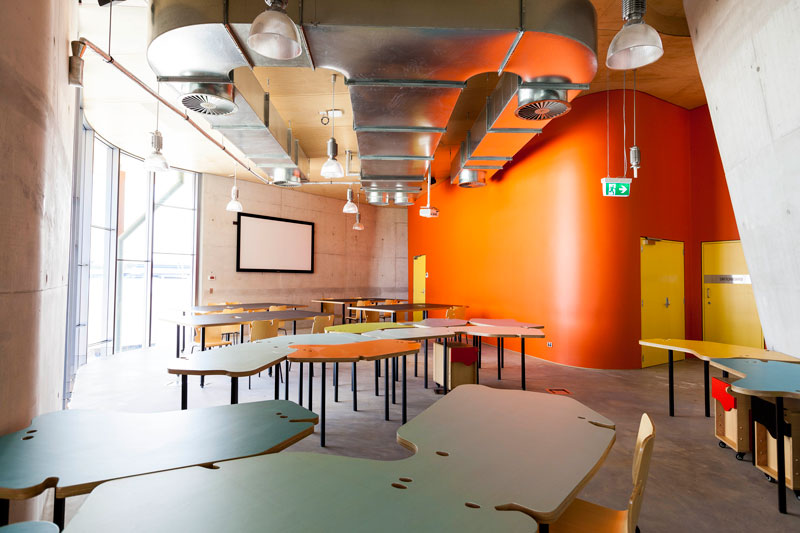
Image © Rix Ryan
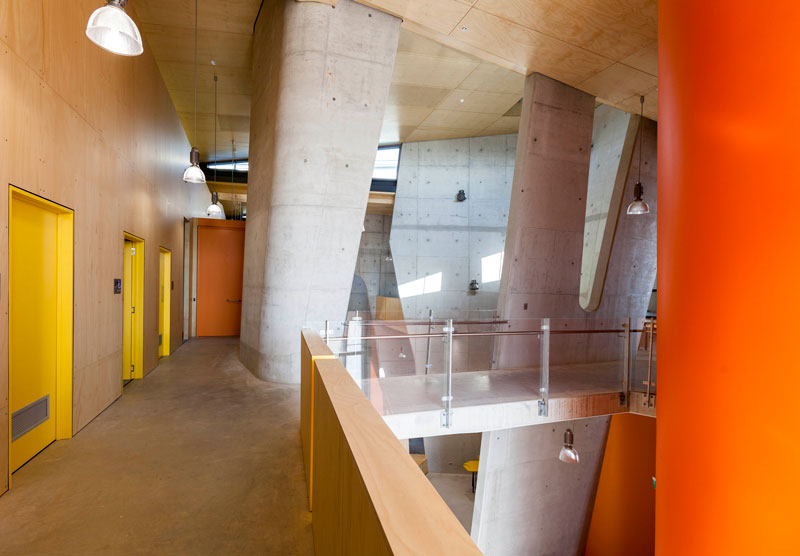
Image © Rix Ryan
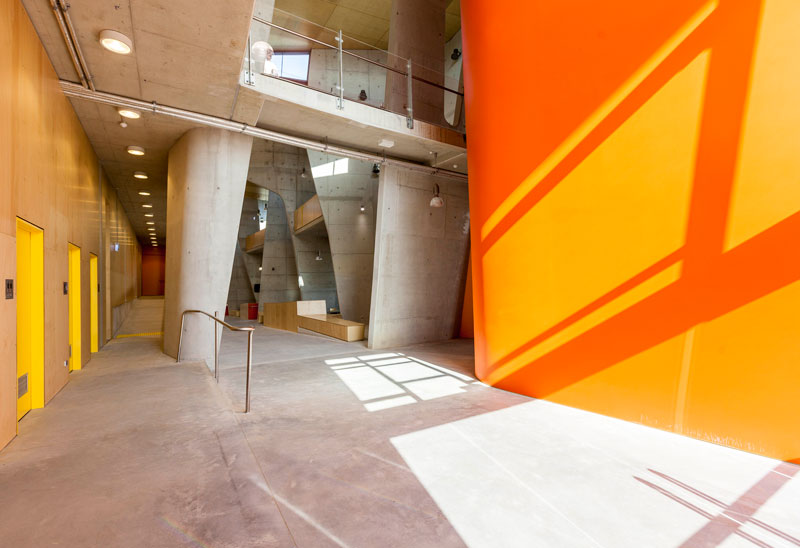
Image © Rix Ryan
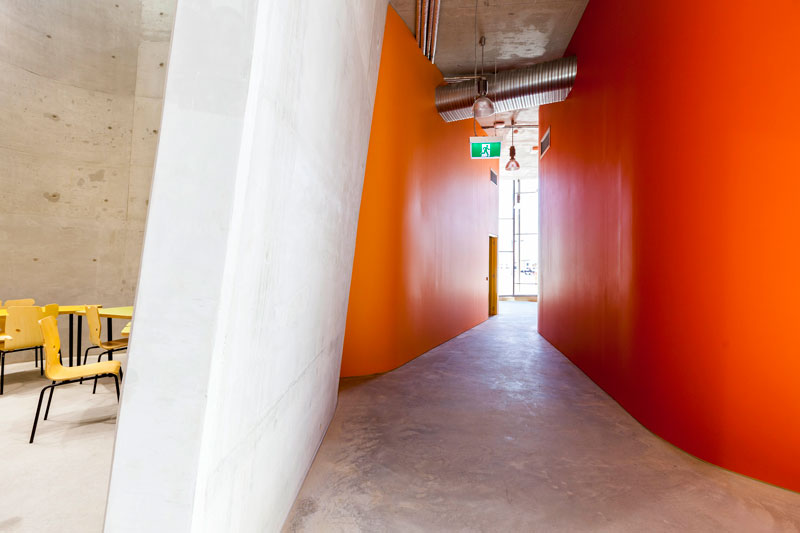
Image © Rix Ryan
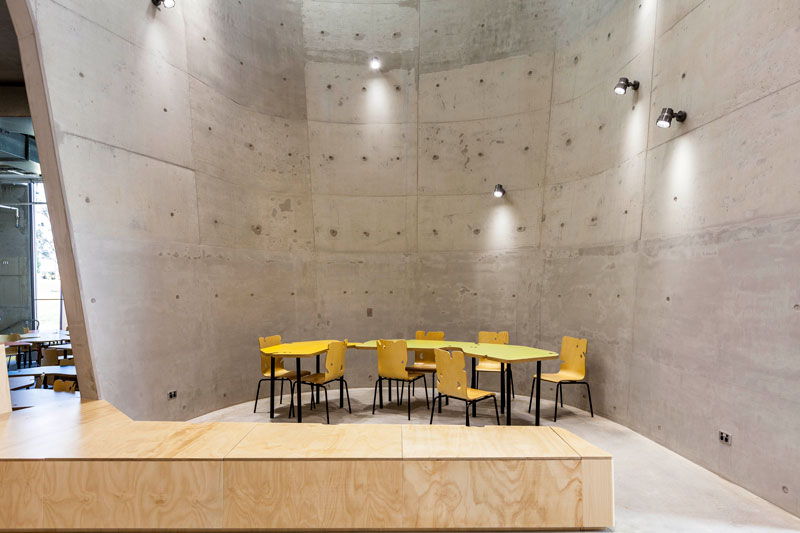
Image © Rix Ryan

Image © Rix Ryan
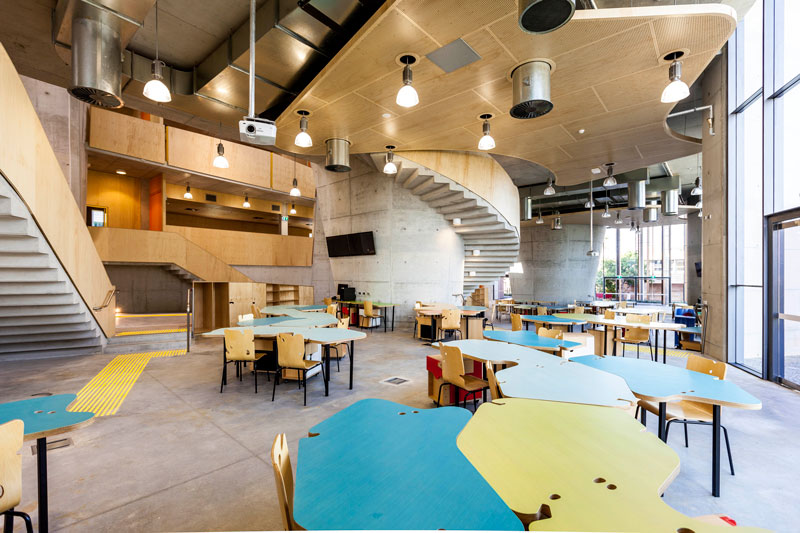
Image © Rix Ryan
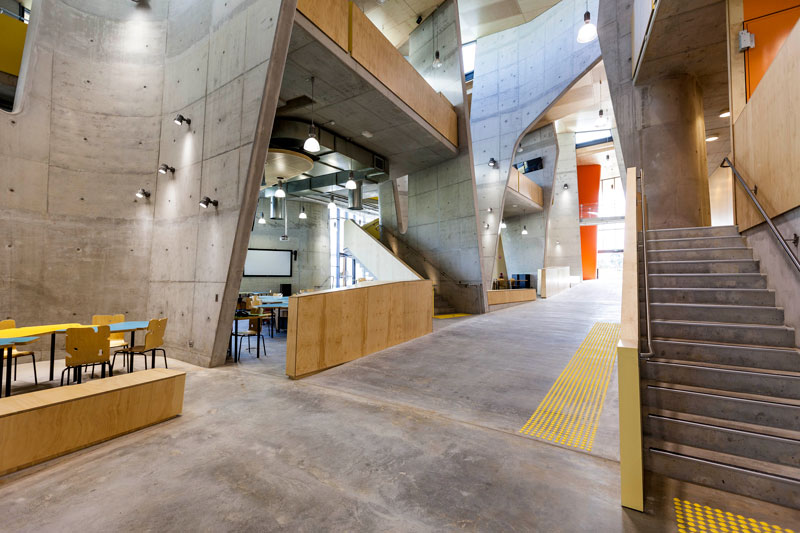
Image © Rix Ryan
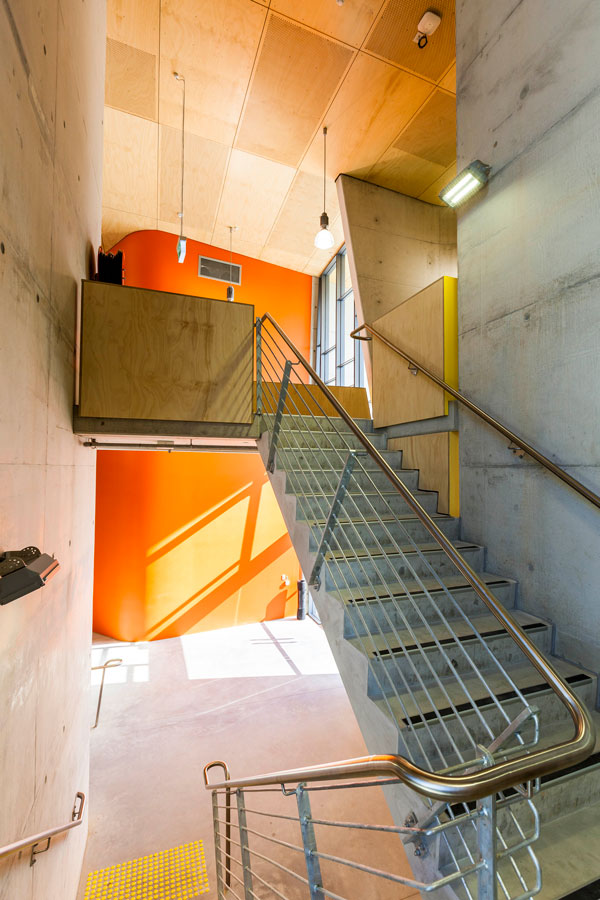
Image © Rix Ryan
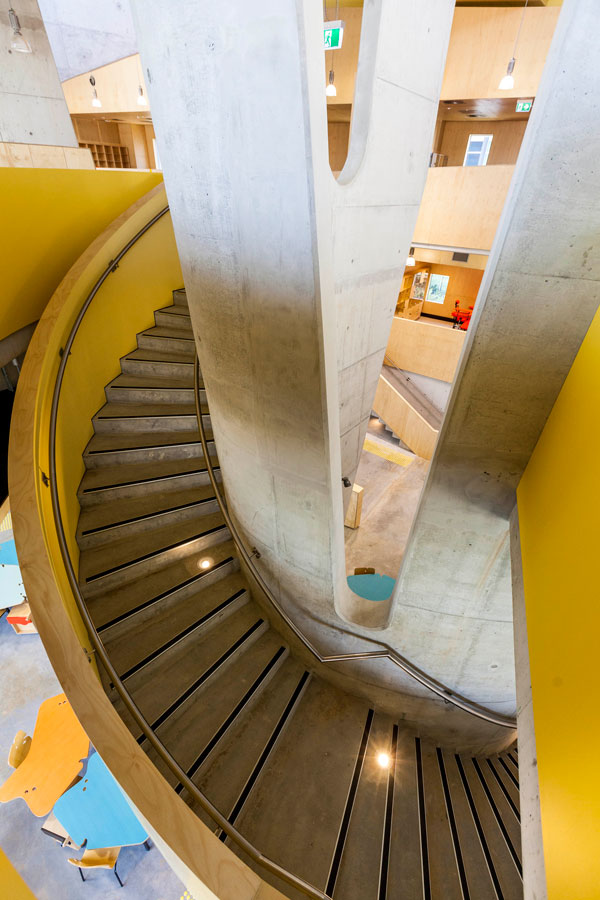
Image © Rix Ryan
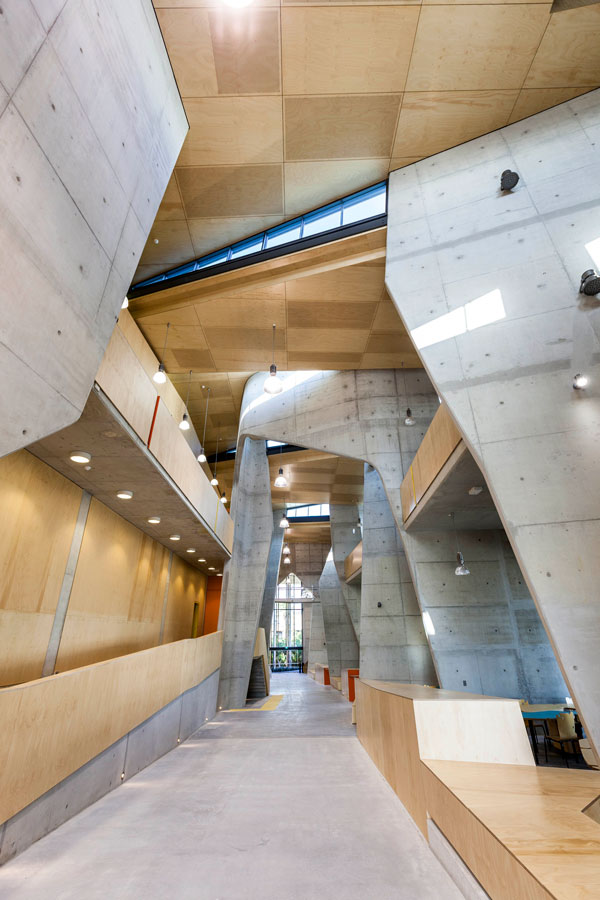
Image © Rix Ryan





Facts:
Design: Sir Peter Cook and Gavin Robotham (CRAB Studio, London)
Client: Bond University
Type: Educational
Location: Queensland, Australia
Budget: $ 16,200,000 AUD
Dimension: 2.500 m²
Primary team: Sir Peter Cook and Gavin Robotham, Mark Bagguley, Jenna Al-Ali, Ting-Na Chen, Lorene Faure, Yang Yu, Tim Culverhouse
General contractor and project management: ADCO, Gold Coast
Structural and environmental engineers: Arup, Brisbane
Status: Completed 2014
Awards: AIA Queensland Public Architecture Award 2014, AIA Gold Coast and Northern Rivers ‘Building of the Year’ 2014, AIA Gold Coast and Northern Rivers ‘People’s Choice Award’ 2014, Education and Health Inside Award 2014, Shortlisted AIA National Architecture Award 2014, Shortlisted WAN Education Award 2014, Shortlisted WAF Higher Education and Research Award 2014
*All images and information courtesy of CRAB Studio.




